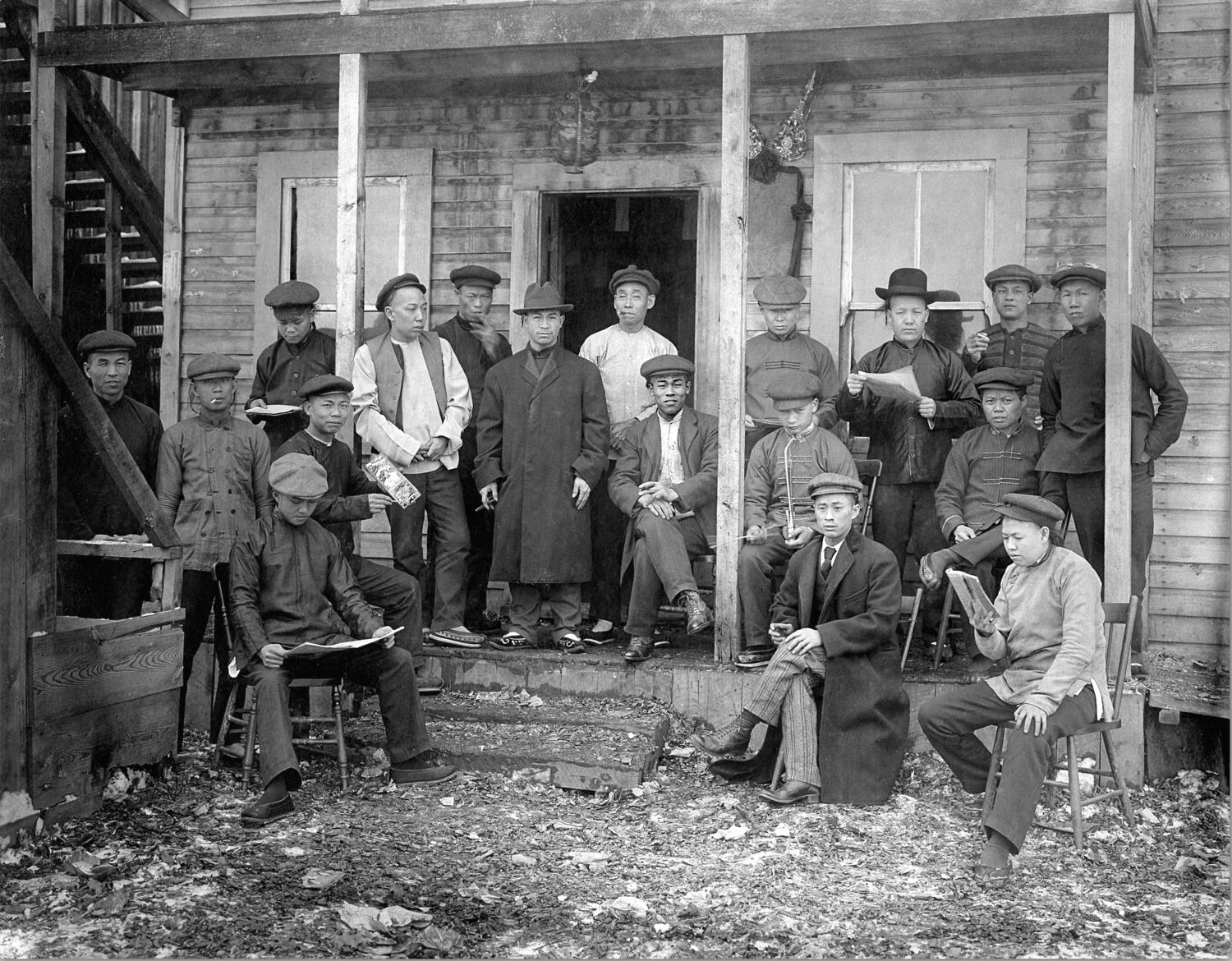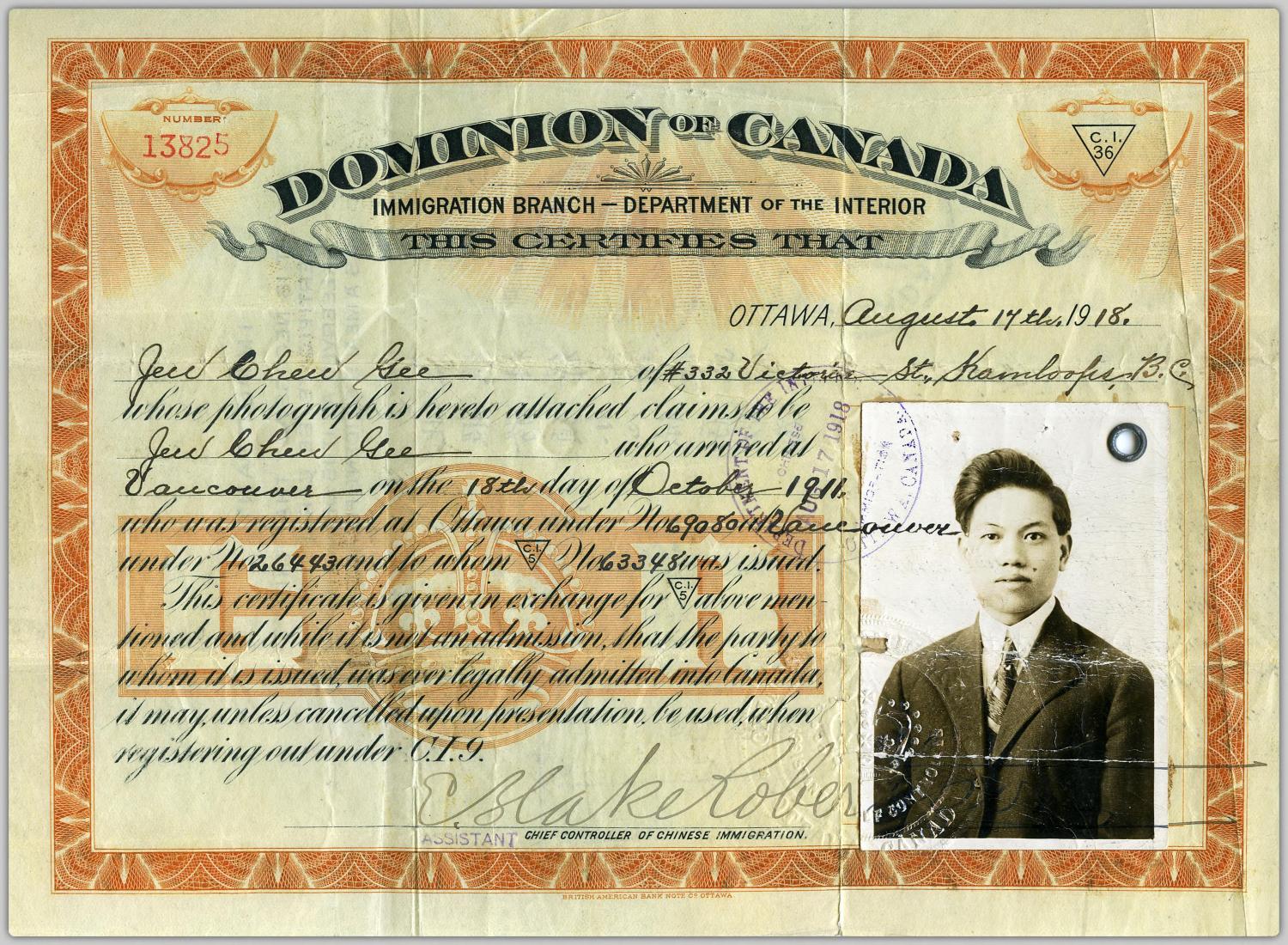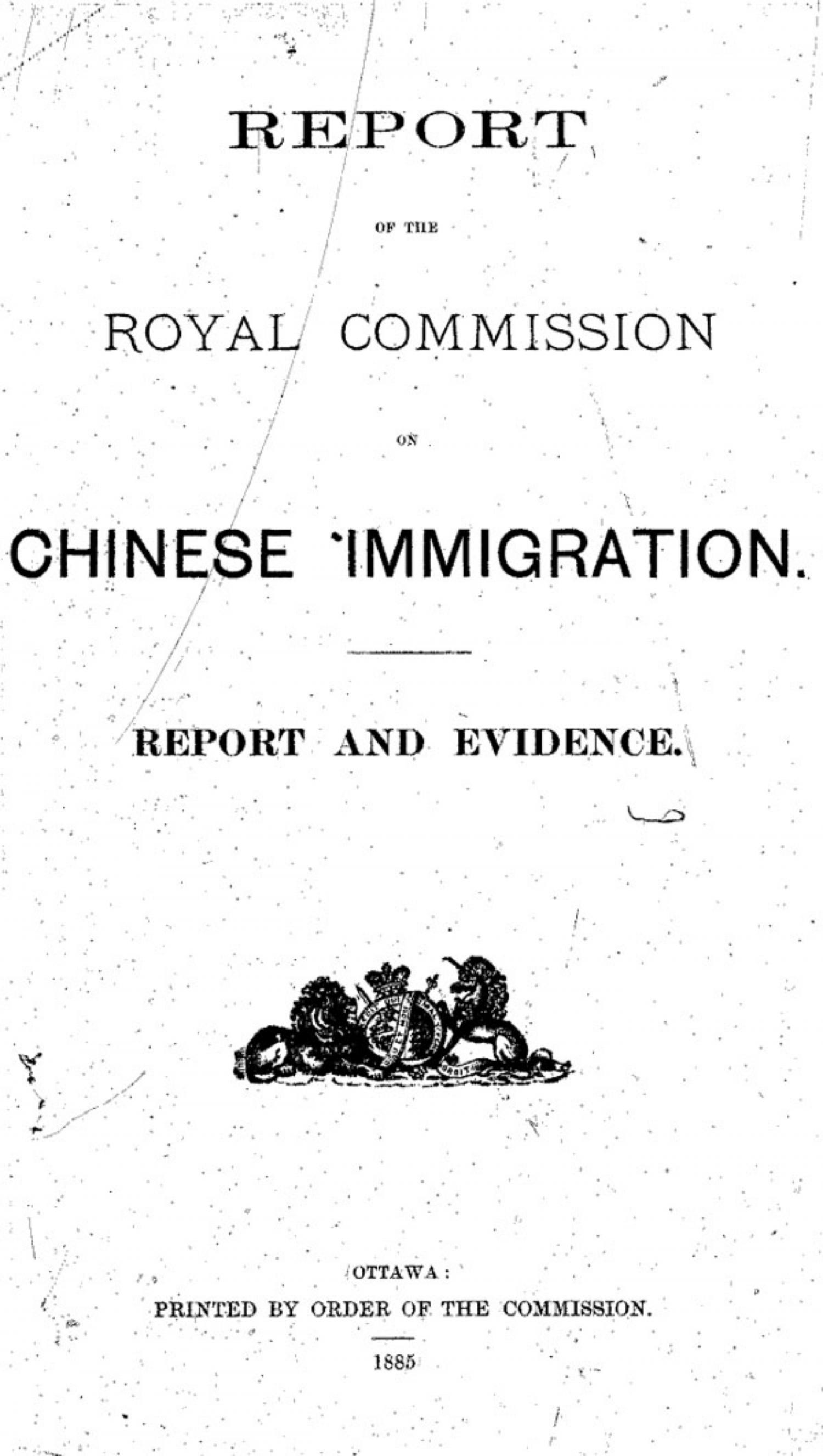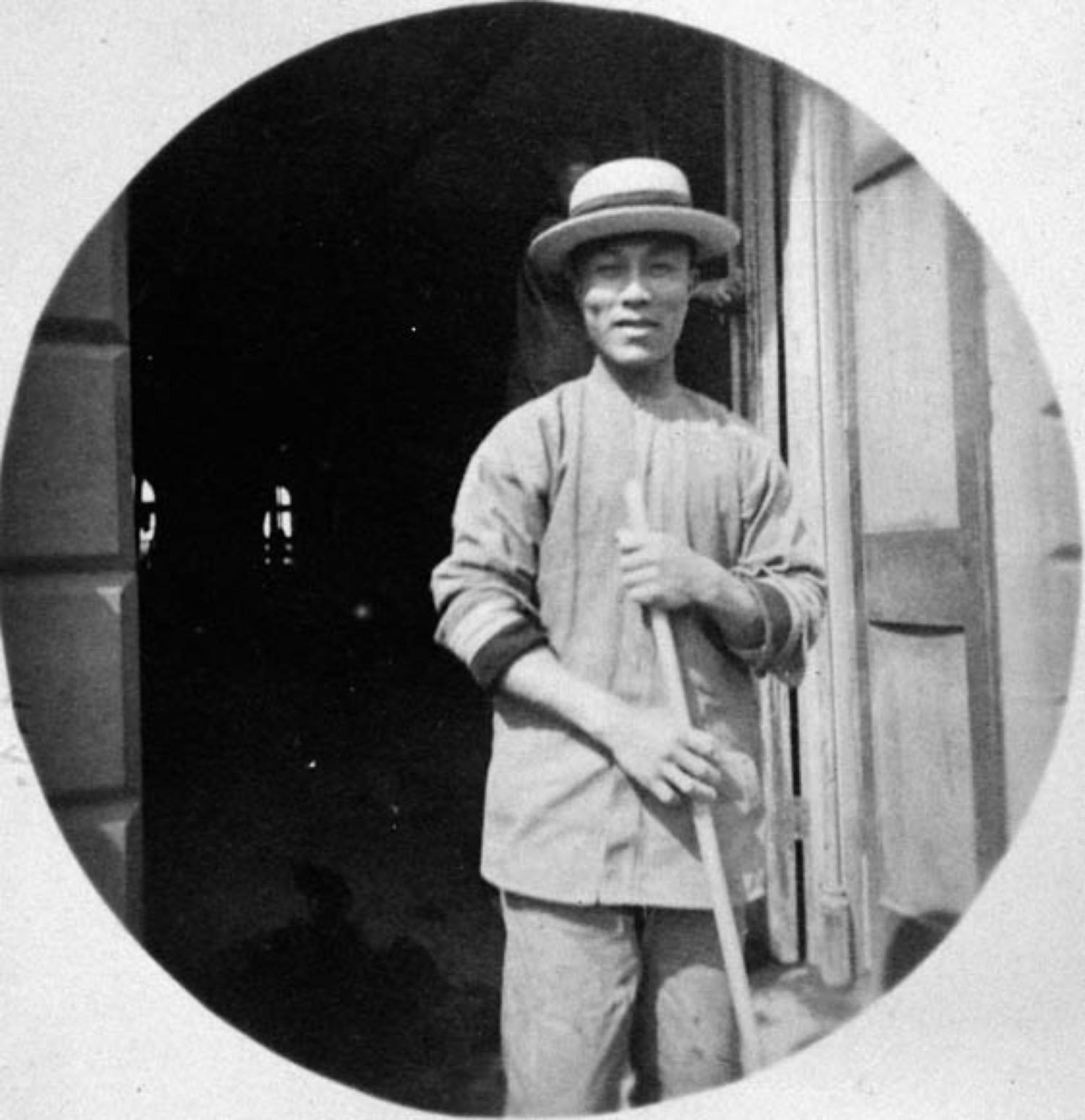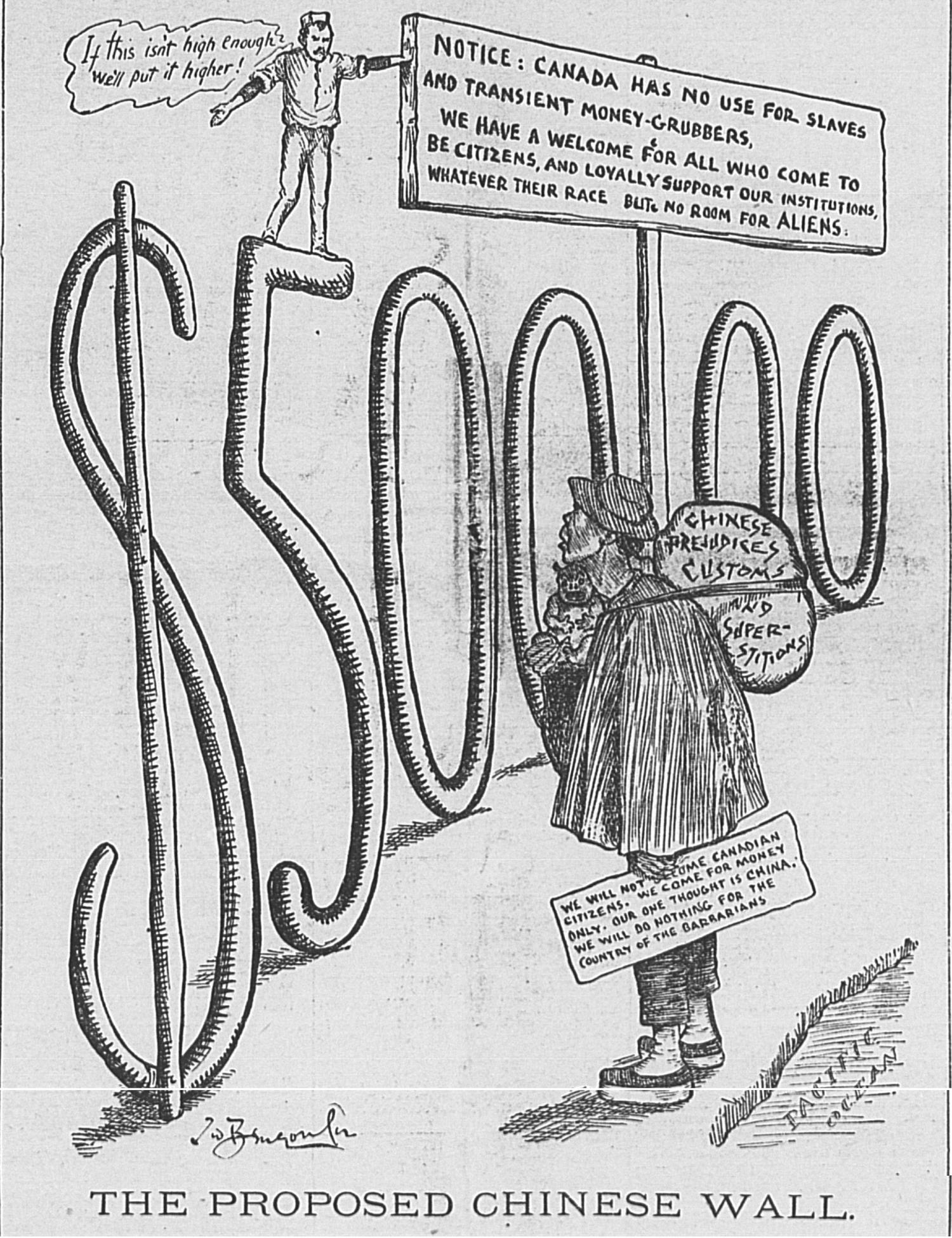The Chinese Head Tax
In 1885, the head tax was set at $50. By 1903, it was $500
Date: 1885
Between 1881 and 1884, about 17,000 Chinese workers came to Canada to help complete the western end of the Canadian Pacific Railway (CPR). The new arrivals engaged in dangerous, back-breaking work for only $1 a day, considerably less than their white counterparts. An estimated 600 Chinese workers died during construction. Despite their sacrifice, the Canadian government faced continuous pressure to restrict Chinese immigration from politicians, trade unionists and the press.
In 1884, Prime Minister John A. Macdonald appointed the Royal Commission on Chinese Immigration to investigate the merits of an anti-Chinese immigration policy. Many offensive and popular claims about Chinese immigrants, including charges of immorality or uncleanliness, were determined to be unfounded by the report’s commissioners. The commission’s report concluded that Chinese immigration actually benefitted British Columbia, particularly the province’s labour market. Still, to quell public hostility towards Chinese immigrants, the commission recommended implementing a $10 tax on all future newcomers from China.
On July 20, 1885, a few months before the railway’s last spike was driven into the ground, the federal government instead imposed a $50 head tax on Chinese workers new to Canada. Merchants and students were exempt. The government believed the average Chinese labourer, who the commission estimated only earned about $300 a year, would struggle to save enough to pay the fee. The tax marked the first time Canadian legislation attempted to limit immigration based on nationality or ethnicity. And though future governments would attempt to minimize immigration from other non-white nations, Chinese immigrants were the only to ever face a fee to enter the country.
Despite the new obstacle, Chinese workers continued to journey to B.C. in pursuit of a better life. Frustrated by its ineffectiveness, the federal government doubled the head tax to $100 in 1900. Canada then raised the levy to $500 per head three years later. In 1923, the head tax was discontinued when the federal government prohibited virtually all Chinese immigration. Besides a few exceptions, Chinese citizens could not legally immigrate to Canada for decades. Though the 'Chinese Exclusion Act,' as it was colloquially called, was repealed in 1947, this change only permitted the children and wives of Canadian citizens to immigrate. It would take another 20 years before the federal government began admitting Chinese people under the same standard as other immigrants.
Historians believe the Canadian government collected approximately $23 million –– more than $340 million today –– from Chinese immigrants who came to the country between 1885 and 1923. That figure nearly equals the $25 million Canada gave to the CPR to build the railway.
Sources:
1. Barman, Jean. The West beyond the West: a History of British Columbia. University of Toronto Press, 2007.
2. Chan, Arlene. Chinese Head Tax in Canada. The Canadian Encyclopedia, 8 Sept. 2016, www.thecanadianencyclopedia.ca/en/article/chinese-head-tax-in-canada.
3. Chan, Arlene. Chinese Immigration Act. The Canadian Encyclopedia, 7 Mar. 2017, www.thecanadianencyclopedia.ca/en/article/chinese-immigration-act.
4. Gagnon, Erica, et al. Royal Commission on Chinese Immigration, 1885 . Canadian Museum of Immigration at Pier 21, pier21.ca/research/immigration-history/royal-commission-on-chinese-immigration-1885#footnote-4.
5. “Head Tax & Exclusion.” The Ties That Bind, Foundation to Commemorate the Chinese Railroad Workers in Canada, www.mhso.ca/tiesthatbind/HeadTaxExclusion.php.
6. History of Canada's Early Chinese Immigrants. Library and Archives Canada, www.bac-lac.gc.ca/eng/discover/immigration/history-ethnic-cultural/early-chinese-canadians/Pages/history.aspx?wbdisable=true.
7. McRae, Matthew. The Chinese Head Tax and the Chinese Exclusion Act. Canadian Museum of Human Rights, humanrights.ca/story/the-chinese-head-tax-and-the-chinese-exclusion-act.
8. Siewsan Chow, Lily. Blood and Sweat Over the Railway Tracks: Chinese Labourers Constructing the Canadian Pacific Railway (1880-1885). Ronsdale Press, 2015.
9. Turner, Robert D. West of the Great Divide: An Illustrated History of the Canadian Pacific Railway in British Columbia 1880-1986. BC Studies, Summer 1988, ojs.library.ubc.ca/index.php/bcstudies/article/view/185728.
10. Wright, Glenn T. Canadian Pacific at the Glenbow: A Hundred Years of the CPR in Western Canada. Archivaria, Winter 1983-1984, archivaria.ca/index.php/archivaria/article/viewFile/11036/11971.
